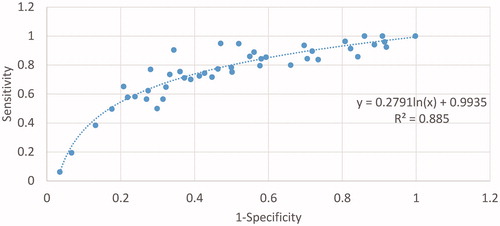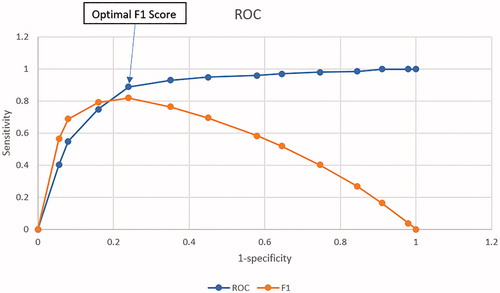Figures & data
Table 1. Demographic and electrocardiographic variables used in predictive models.
Table 2. Echocardiographic variables used in predictive models.
Figure 1. Sensitivity versus 1-specificity for strain-based artificial neural network (ANN) model to predict ischaemic cardiomyopathy in systolic heart failure.

Table 3. Accuracy of predictive models.


